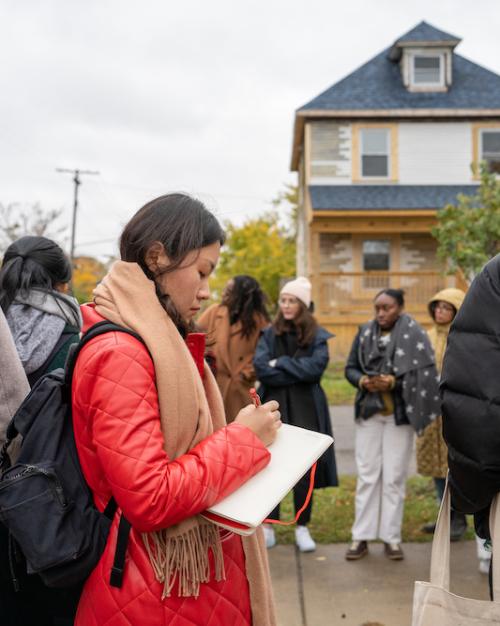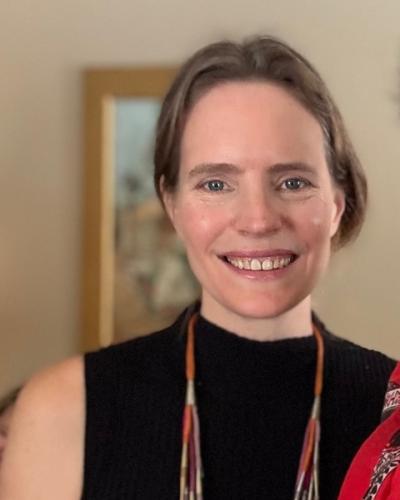From reimagining Harlem through the eyes of a poet to envisioning the future of Detroit together with residents, Cornell students explored creative ways to understand urban landscapes during two cross-disciplinary courses this year, part of Cornell's Mellon Collaborative Studies in Architecture, Urbanism, and the Humanities (AUH).
Two graduate courses co-taught by faculty from the College of Arts and Sciences (A&S) and the College of Architecture, Art, and Planning (AAP) drew students from multiple colleges; undergraduates, graduate students, and postdoctoral researchers took part.
“The Mellon Foundation has recognized Cornell’s longstanding commitment to the interdisciplinary study of race and social justice,” said Timothy Murray, director of the Cornell Council for the Arts (A&S). “Mellon AUH provides a fertile environment for a reflection on urbanism that combines architecture and the humanities.”
Supported by a third renewal grant from the Andrew D. Mellon Foundation, the collaborative studies program is directed by Murray and J. Meejin Yoon, the Gale and Ira Drukier Dean of the College of Architecture, Art, and Planning. The program is a partnership between the Mellon Foundation and four entities at Cornell: AAP, Cornell Libraries, the Herbert F. Johnson Museum of Art and the Society for the Humanities (A&S).
Students in the spring 2023 “Urban Justice Lab: Seeing to Be in the Aftermath,” co-taught by Lyrae Van Clief-Stefanon, associate professor of literatures in English (A&S) and Keith Obadike, professor of art (AAP) and a composer, are looking at ways poems and songs help us develop theories of place.
As her students prepare their final projects this week, Van Clief-Stefanon said the course was inspired by “Skyrise for Harlem,” a redesign of Harlem that the poet June Jordan envisioned with architect Buckminster Fuller to save herself from the hatred she felt after riots in that neighborhood in 1964.
“I thought, what a hopeful and beautiful thing to do in a moment of violence, when bitterness could overtake you,” Van Clief-Stefanon said. “To turn instead toward collaboration and creativity as the response.”
In the course, Van Clief-Stefanon and Obadike challenged their students from disciplines as diverse as creative writing, architecture and music composition to produce their own creative works as a mode of thought. Students thought through how the realm of the imagined has intersected with architectural projects and the development of communities.
“I wanted them to think about home,” Obadike said. “Cities are made of multiple homes. We looked at important songs people learn from their mothers and how those things help them construct their ideas of home.”
The fall 2022, “Design Justice Workshop: Community/Engagement: Methods for Critical Theory and Design” class, co-taught by Suzanne Lettieri, assistant professor of architecture (AAP) and Karen Pinkus, professor of Romance studies and comparative literature (A&S), explored Detroit as a case study, centered around a week-long residency in the city.
“We worked with local artists, activists, high school students and other community members to explore what it means to do community engagement,” Lettieri said. “We were learning through active projects in Detroit: who are the actors within a community engagement project and how do projects vary in scope, scale, impact?”
“Ph.D. students from comparative literature and Romance studies learned a great deal about applying theoretical concepts – such as climate justice, autonomy, and reparations – to design,” Pinkus said. “The experience will have long-term effects on their research. The beauty of a workshop is that we were experimenting in ways that conventional literature classes do not allow.”
In addition to its courses, Mellon AUH also supports summer internships at non-profits focused on racial justice and the Mellon Curatorial Expression Program for which exhibitions were curated for the 2022 Cornell Biennial by two teams of graduate students in the Departments of Africana Studies, Romance Studies, Comparative Literature, Human Centered Design and Anthropology, and in the American Indian and Indigenous Studies Program.








